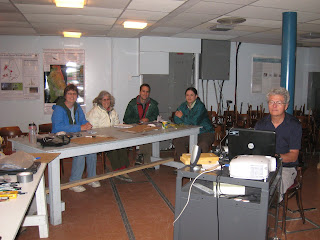One eye opener I had was how difficult it was to follow a lecture if I was unfamiliar with the vocabulary. As an educated adult I sometimes forget that my students do not always understand all of the terms pertinent to the topic under study. Although our presenter thoroughly enjoys his research, his enthusiasm did not always transfer to me as I listened to his evening lectures. Granted, I was tired by 7:30pm after spending 7 hours in the field, but my interest in the topic might have been sustained if I was more familiar with pingos. polygonal peat plateuas, and palsas.
During the course of the study I did learn that a pingo is a mound of gravel or earth occuring inn Arctic regions as a result of pressure from water ttrapped between newly frozen ice and the permafrost beneath it. A palsa is in an area of permafrost, a peat mound, several metres in height, and up to 100 m in diameter, which obtrudes because it is better drained and thus more subject to frost heaving than wetter areas.
In retrospect, I know I need to stress the vocabulary of scientific terms more than I have in the past. My challenge will be to keep my students interested in science at the same time.



Yep, snooze ya loose them!
ReplyDelete